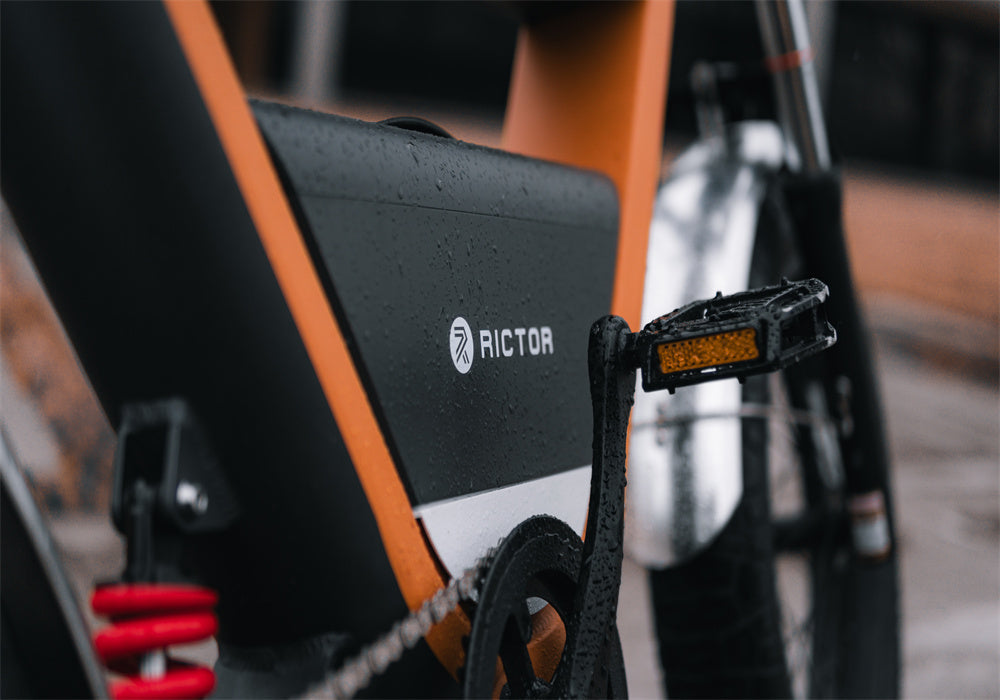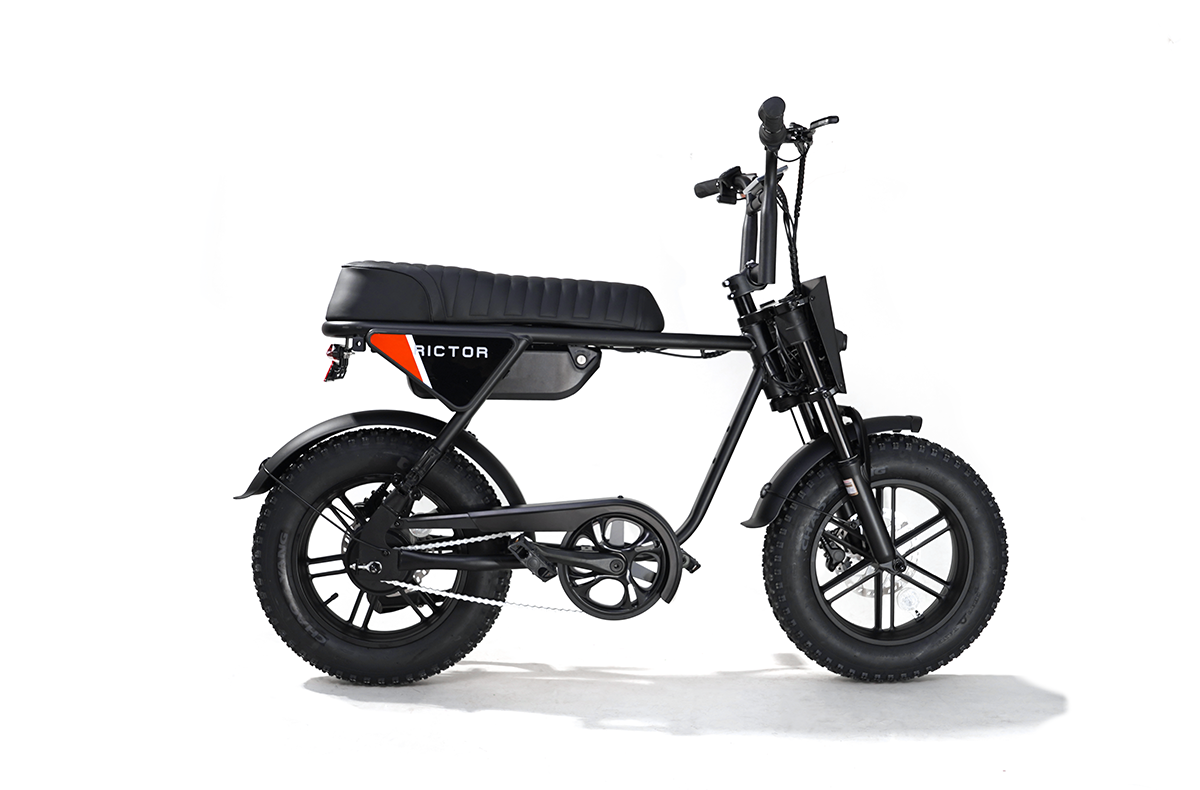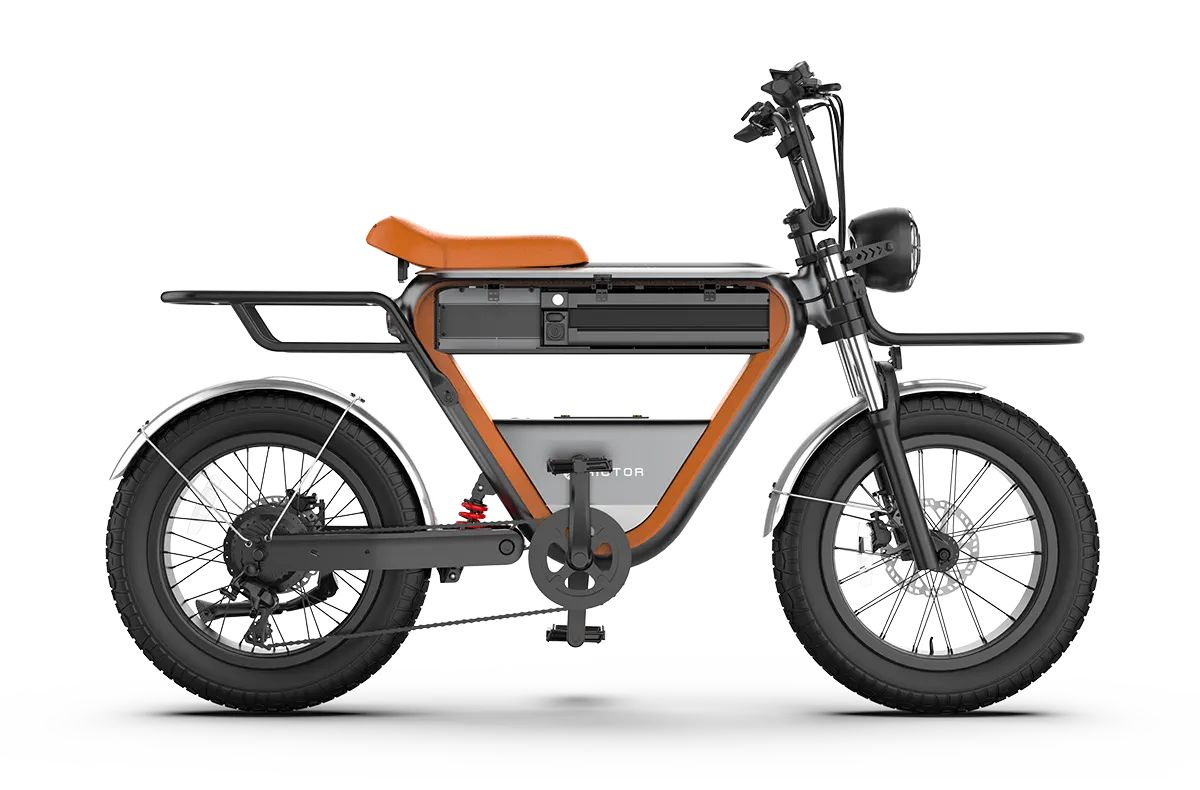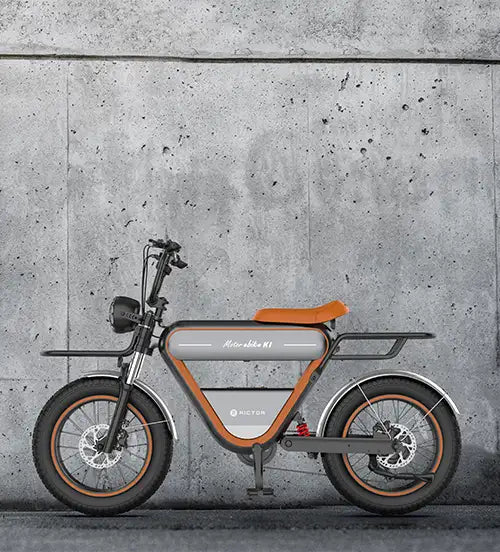
Electric Bike Battery Care: Extend Life by 40% with Simple Practices
The battery is arguably the most valuable component of your electric bike - and often the most expensive to replace. With proper care and maintenance, you can significantly extend its lifespan, saving money and reducing waste. This guide shares proven techniques that could help you get up to 40% more life from your eBike battery.
Electric Bike Battery
Most modern eBikes use lithium-ion batteries, which typically last between 500-1000 complete charge cycles before their capacity noticeably decreases. However, with proper care, you can push toward the upper end of that range and beyond.
Key Factors That Affect Battery Lifespan:
- Charging habits
- Storage conditions
- Temperature exposure
- Riding patterns
- Maintenance routines
1. Master the Optimal Charging Routine
Avoid complete discharges whenever possible Contrary to older battery technologies, lithium-ion batteries don't have a "memory effect." Completely draining your battery before recharging actually reduces its lifespan. Try to keep your battery level between 20% and 80% for optimal longevity.
Don't leave your battery at 100% charge for extended periods Once your battery reaches full charge, unplug it. Leaving a fully charged battery connected to the charger for days stresses the cells and can reduce overall capacity over time.
Use the manufacturer's recommended charger Aftermarket chargers might be cheaper, but they can deliver improper voltage or current that damages your battery. Always use the charger designed specifically for your battery model.
SEE ALSO Does an Electric Bike Require a License?
2. Perfect Your Storage Practices
Store at 40-60% charge during long periods of non-use If you're not using your eBike for weeks or months (such as during winter), the ideal storage charge is between 40-60%. This range minimizes stress on the battery cells.
Keep in a cool, dry place Store your battery in a location with stable temperature, ideally between 10-20°C (50-68°F). Avoid places with high humidity, direct sunlight, or extreme temperature fluctuations.
Perform maintenance charges during long-term storage For storage periods exceeding one month, recharge the battery to 50-60% every 4-6 weeks to prevent deep discharge that can permanently damage cells.
3. Protect Your Battery from Temperature Extremes
Shield from extreme cold Battery performance drops significantly in cold weather, but the real damage occurs when riding with a cold battery. If possible, store your battery indoors and install it just before riding in winter conditions.
Avoid extreme heat High temperatures accelerate chemical reactions inside the battery that lead to degradation. Never leave your battery in direct sunlight or in a hot car. If riding in very hot conditions, allow the battery to cool before recharging.
Give your battery time to adjust If bringing your battery from a cold environment to a warm one (or vice versa), allow it to gradually reach the new ambient temperature before charging or use.
4. Adopt Smart Riding Habits
Use eco mode when possible Higher power modes drain your battery faster and create more heat, which can accelerate wear. Using eco or lower-power modes not only extends your range but also reduces stress on the battery.
Pedal more, especially when starting and climbing Providing human power during high-demand moments like starting from a stop or climbing hills reduces battery strain. When you feel the motor working hard, add more of your own power to assist.
Plan routes strategically Constant stopping and starting requires more energy than steady riding. When possible, choose routes with steady gradients and fewer traffic stops to reduce battery stress.
5. Implement Regular Maintenance Checks
Keep contacts clean Periodically check and clean the battery contacts with a dry cloth. Dirty or corroded contacts can cause poor connections, reducing efficiency and potentially damaging the battery.
Inspect for physical damage Regularly examine your battery casing for cracks, swelling, or other signs of damage. Physical damage can compromise the battery's integrity and potentially create safety hazards.
Update firmware Many modern eBike systems receive battery management updates that can improve efficiency and longevity. Check for system updates at least twice a year.
6. Understand Depth of Discharge Impact
Each lithium-ion battery has a finite number of charge cycles, but the depth of each discharge significantly affects overall lifespan. Consider these approximate figures:
- 100% depth of discharge: ~500 cycles
- 80% depth of discharge: ~800 cycles
- 50% depth of discharge: ~1500 cycles
- 25% depth of discharge: ~2500 cycles
This means that multiple partial charges are better than fewer full discharges, even though it might seem counterintuitive.
7. Maximize Battery Health with Battery Management Systems
Many premium eBikes come with sophisticated Battery Management Systems (BMS). These systems:
- Balance individual cells to prevent uneven wear
- Protect against over-charging and over-discharging
- Monitor temperature and adjust performance accordingly
If your eBike system has an app or display with battery health features, use these tools to monitor and optimize your battery's condition.
Conclusion
Implementing these practices can significantly extend your eBike battery's lifespan - potentially by up to 40% compared to poorly maintained batteries. While no battery lasts forever, proper care ensures you'll get the maximum value and performance from this crucial component.
FAQs
How do I know when my eBike battery needs replacement?
Look for significant capacity reduction (holding less than 70% of original charge), unusually short range, inconsistent power delivery, or physical signs like swelling. Most batteries need replacement after 3-5 years of regular use.
Can I use a fast charger to save time?
While fast chargers reduce charging time, they generate more heat and can reduce battery lifespan. Use the manufacturer's recommended charger for everyday charging and reserve fast charging for when absolutely necessary.
Is it better to charge my battery after every ride or wait until it's lower?
Shallow, frequent charges are better than deep discharges. Ideally, recharge when the battery falls to 30-40% rather than waiting until it's nearly empty.
💡 Explore More Here!
- Why Are Men's and Women's Bikes Structurally Different?
- 7 Essential Tips for Charging Your eBike Battery – Prevent Fires and Extend Battery Life
- Is Ebike Insurance Really Necessary? Everything You Need to Know
- How Much Tire Pressure Your E-Bike Needs
- How to Lube Your Electric Bike's Chain Fast and Quickly





